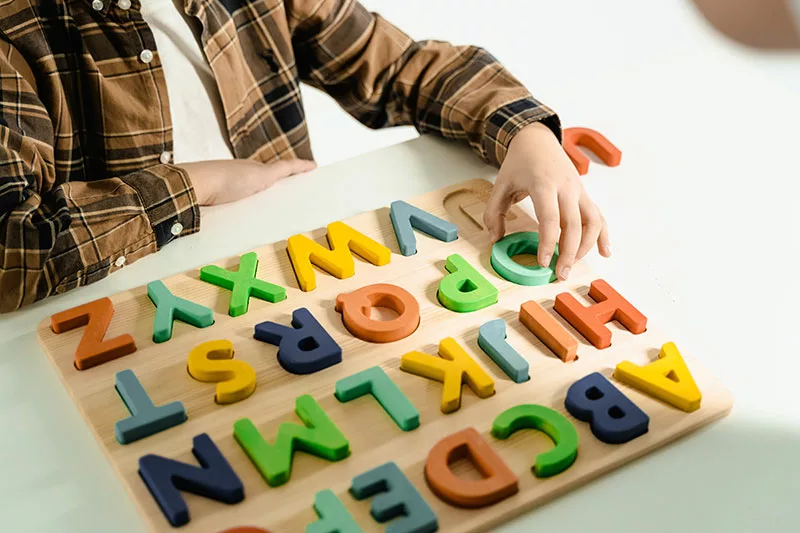The importance of educational toys in teaching and learning
Educational toys play a vital role in teaching and learning, as they help stimulate children’s curiosity and imagination while promoting the development of essential skills. By incorporating educational toys into the classroom, educators can foster a more engaging and interactive learning environment.
Overview of educational toys in various educational settings
Educational toys can be found in a wide range of settings, from preschools and elementary schools to high schools and adult learning centers. They serve as powerful tools to enhance the learning experience by making complex concepts more accessible and enjoyable.
I. Types of Educational Toys
Manipulatives
Manipulatives are hands-on learning tools that help students develop their understanding of mathematical and scientific concepts. Examples include counting cubes, pattern blocks, and tangrams.
Construction toys
Construction toys, such as building blocks and LEGO sets, encourage creativity and problem-solving skills. They also help children develop spatial awareness and fine motor skills.
Puzzles and games
Puzzles and games challenge children’s critical thinking and cognitive skills, while also promoting collaboration and teamwork. Examples include crossword puzzles, Sudoku, and board games like Scrabble or chess.
Sensory toys
Sensory toys cater to children’s sensory needs, helping them explore different textures, shapes, and sounds. Examples include playdough, sensory bins, and musical instruments.
Electronic and digital learning toys
These toys leverage technology to facilitate learning, providing interactive experiences that adapt to individual needs. Examples include tablets with educational apps, coding toys, and electronic learning systems.
II. Benefits of Using Educational Toys in Schools
Enhancing cognitive development
Educational toys stimulate children’s cognitive development, helping them understand complex concepts and develop critical thinking skills.
Encouraging creativity and problem-solving
Toys that challenge children’s creativity and problem-solving abilities foster their capacity for innovation and adaptability.
Improving fine and gross motor skills
Playing with educational toys helps children develop and refine their fine and gross motor skills, which are essential for daily activities and academic success.
Promoting social and emotional development
Group play with educational toys fosters social skills, emotional intelligence, and empathy, as children learn to communicate, collaborate, and share with their peers.
Supporting language and literacy skills
Toys that promote language and literacy skills, such as letter puzzles or storytelling games, help children develop their vocabulary, reading, and writing abilities.
III. Integrating Educational Toys into the Curriculum
Lesson planning and activity design
Educators should incorporate educational toys into their lesson plans and design activities that align with curriculum objectives and learning goals.
Classroom organization and management
To effectively integrate educational toys, teachers must create organized and accessible spaces for play, ensuring that toys are well-maintained and readily available.
Assessing student progress through play-based learning
Teachers can use observation and documentation to assess student progress, identifying areas of growth and areas that require additional support.
Supporting diverse learners with inclusive educational toys
Educational toys should cater to the diverse needs of learners, ensuring that all students have access to engaging and developmentally appropriate materials.
IV. Educational Toys in Alternative Learning Environments
Homeschooling
Homeschooling families can benefit from incorporating educational toys into their curricula, providing hands-on learning experiences that align with their educational goals.
Special education settings
Educational toys are valuable tools in special education settings, where they can be used to support students with diverse learning needs and abilities.
After-school programs and extracurricular activities
Educational toys can be used in after-school programs and extracurricular activities to reinforce learning concepts, promote skill development, and foster social connections
Online and remote learning
Incorporating educational toys into online and remote learning can help maintain engagement and facilitate hands-on learning experiences, even when students are not physically present in the classroom.
V. Selecting the Right Educational Toys for Different Age Groups
Early childhood education
For young children, educational toys should focus on sensory exploration, motor skills development, and foundational cognitive skills. Examples include stacking blocks, shape sorters, and simple puzzles.
Elementary school
At this stage, educational toys should promote critical thinking, problem-solving, and collaboration. Examples include board games, construction toys, and science kits.
Middle and high school
For older students, educational toys should target advanced cognitive skills, creativity, and real-world applications. Examples include robotics kits, coding toys, and complex strategy games.
Adult learners
Educational toys for adult learners should be tailored to their specific learning goals and interests, such as language learning tools, brain teasers, or art supplies.
VI. Challenges and Considerations
Budget constraints
Schools and educators may face budget limitations when purchasing educational toys, so it’s essential to prioritize resources and seek cost-effective options.
Ensuring age-appropriate and safe materials
Educators must ensure that educational toys are age-appropriate and made from safe, non-toxic materials.
Balancing screen time and hands-on learning
While electronic and digital learning toys offer valuable educational benefits, it’s crucial to balance screen time with hands-on, tactile learning experiences.
Addressing diverse learning styles and needs
Educators should consider the diverse learning styles and needs of their students when selecting educational toys, aiming to provide a range of materials that cater to various preferences and abilities.
VII. Conclusion
The significant role of educational toys in modern education
Educational toys play a critical role in modern education, offering engaging and interactive learning experiences that promote the development of essential skills and foster a lifelong love for learning.
Encouragement for educators to incorporate educational toys in their teaching strategies
By incorporating educational toys into their teaching strategies, educators can create more engaging and effective learning environments that cater to the diverse needs of their students, helping them reach their full potential.

